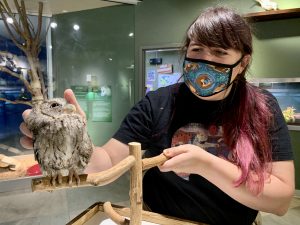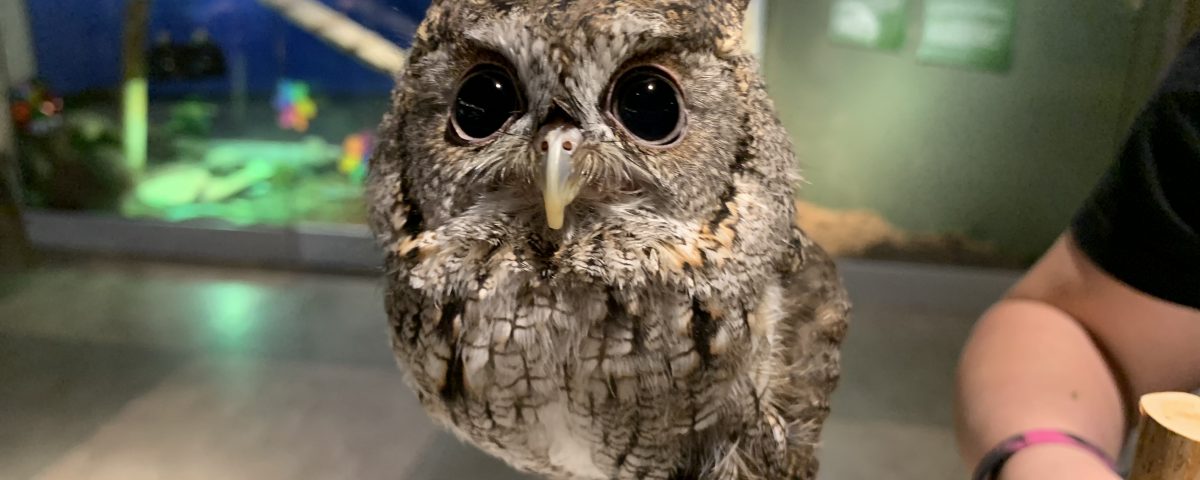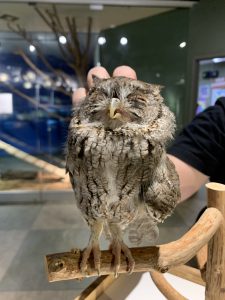Florida Naturalist’s Center Living Collection Spotlight – January 2022

A Short History on New Year Resolutions & How MOSH Can Help
January 14, 2022
MOSH Presents Playing With Light Exhibition
January 25, 2022Susie the Eastern screech owl
Nickname: Susie-Q
Favorite Food: Fuzzy mice
Aspires to: Be the cutest owl
Susie came to MOSH in 2013 after recovering at H.A.W.K.E, a wildlife rehabilitation center in Elkton, FL. We believe she sustained an injury to her left wing after falling out of a tree. Her wing did not heal properly, which left her unable to fly. However, she is an expert at hopping around her enclosure.
Life in the Florida Naturalist’s Center:
Susie’s petite size bewilders Museum visitors and leaves them thinking she is just a baby. They are shocked when they learn she is a full-grown adult! Eastern screech owls are the smallest native owl species in Florida with a maximum height of 10 inches and an average weight of 8.6 ounces. Our Naturalists are unsure of Susie’s exact age because she was found as an adult, but in captivity they can live up to 20 years.
In the Naturalist’s Center, Susie eats two small mice or three fuzzy mice per day. In the wild her diet would be more diverse. Eastern screech owls can also eat small reptiles, earthworms, crayfish, and even smaller birds like thrushes, finches, woodpeckers, and sparrows. Susie has some adorable features that actually serve a very important purpose—her main feature being her large, expressive eyes. Owls, like other raptors, have large eyes, which remain in a fixed position causing them to have to move their head 270⁰ to see their entire surroundings. Their binocular vision allows them to hunt for prey high off the ground as they wait patiently. Susie prefers to lounge in her perch box inside her enclosure. This mimics the tree cavities she would have used as shelter in the wild.
It is difficult to estimate the eastern screech owl population size and its need for conservation efforts. Because they are nocturnal creatures, observation proves challenging. There are enough owls, however, to keep their IUCN (International Union for Conservation of Nature) conservation status at a “least concern” level. The species has a large range, with populations predominantly found in eastern North America spanning from the Rocky Mountains to the Atlantic Coast and as far south as northeastern Mexico and Florida. 
Our Naturalist says:
You can spot these birds on fence posts, trees, and buildings here in Jacksonville. It is important to observe them from a distance. Although Susie doesn’t vocalize her screeches often, her wild counterparts make loud shrilling sounds to communicate with each other. Susie is extremely smart; she knows the command “step up” and is excellent at practicing her examination routine for easier vet visits. Remember that owls can hear your heartbeat, so it is important to be as quiet as possible when visiting Susie in the Naturalist’s Center.



